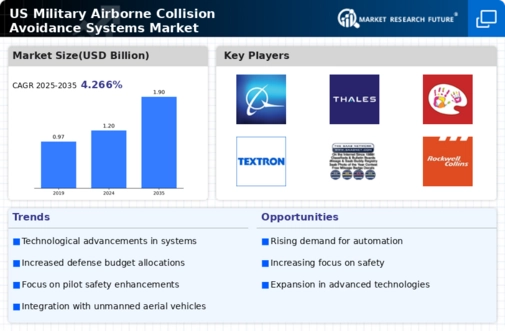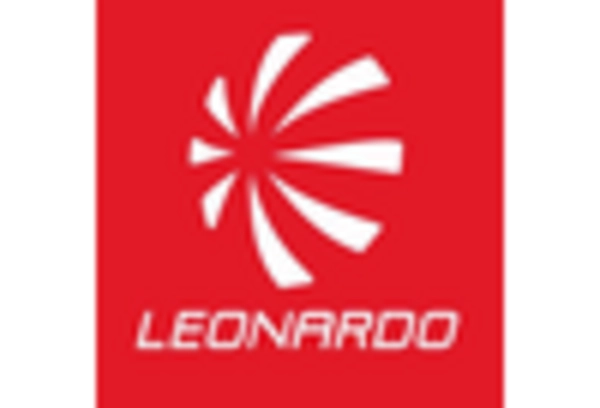The military airborne-collision-avoidance-systems market is characterized by a dynamic competitive landscape, driven by technological advancements and increasing demand for safety in military aviation. Key players such as Northrop Grumman (US), Raytheon Technologies (US), and BAE Systems (GB) are at the forefront, each adopting distinct strategies to enhance their market positioning. Northrop Grumman (US) focuses on innovation, particularly in artificial intelligence (AI) and machine learning, to improve the efficacy of their collision avoidance systems. Meanwhile, Raytheon Technologies (US) emphasizes partnerships with defense agencies to integrate their systems into existing military platforms, thereby enhancing operational capabilities. BAE Systems (GB) is pursuing regional expansion, particularly in Asia-Pacific, to tap into emerging markets, which collectively shapes a competitive environment that is increasingly reliant on technological sophistication and strategic collaborations.
The market structure appears moderately fragmented, with several players vying for dominance. Key business tactics include localizing manufacturing to reduce costs and optimize supply chains, which is crucial in a sector where timely delivery and reliability are paramount. The collective influence of these major players fosters a competitive atmosphere where innovation and strategic partnerships are essential for maintaining market share.
In October 2025, Northrop Grumman (US) announced a collaboration with the U.S. Air Force to develop next-generation airborne collision avoidance systems utilizing advanced AI algorithms. This strategic move is significant as it not only reinforces Northrop Grumman's commitment to innovation but also positions them as a leader in integrating cutting-edge technology into military applications, potentially setting new industry standards.
In September 2025, Raytheon Technologies (US) secured a contract with the U.S. Navy to enhance their existing collision avoidance systems. This contract is pivotal as it underscores Raytheon's ability to adapt and upgrade current technologies, ensuring that their systems remain relevant and effective in an evolving threat landscape. Such actions may solidify their market position and enhance customer trust in their capabilities.
In August 2025, BAE Systems (GB) launched a new suite of collision avoidance technologies tailored for unmanned aerial vehicles (UAVs). This initiative is particularly noteworthy as it reflects BAE's strategic focus on the growing UAV market, which is expected to expand significantly in the coming years. By diversifying their product offerings, BAE Systems may capture a larger share of the market and respond effectively to changing military needs.
As of November 2025, current trends in the military airborne-collision-avoidance-systems market indicate a strong shift towards digitalization and AI integration. The emphasis on sustainability is also becoming more pronounced, with companies exploring eco-friendly technologies. Strategic alliances are increasingly shaping the competitive landscape, as firms recognize the value of collaboration in driving innovation. Looking ahead, competitive differentiation is likely to evolve from traditional price-based competition to a focus on technological innovation, reliability, and supply chain efficiency, suggesting a transformative period for the industry.

















Leave a Comment